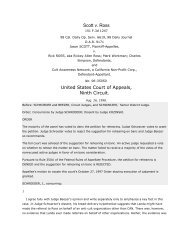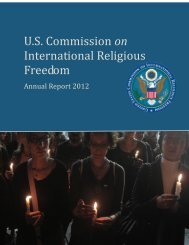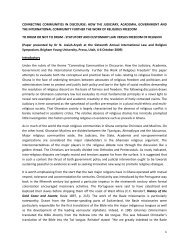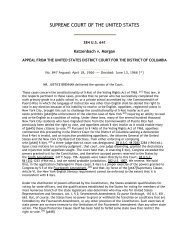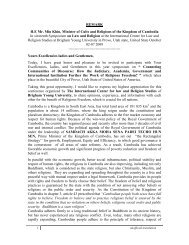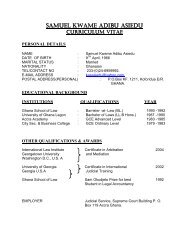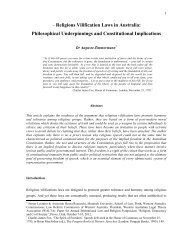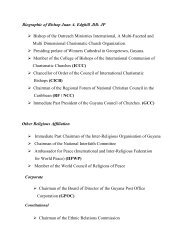Ruling (.pdf) - International Center for Law and Religion Studies
Ruling (.pdf) - International Center for Law and Religion Studies
Ruling (.pdf) - International Center for Law and Religion Studies
You also want an ePaper? Increase the reach of your titles
YUMPU automatically turns print PDFs into web optimized ePapers that Google loves.
per<strong>for</strong>mance of the job without endangering the employee, hisfellow employees <strong>and</strong> the general public. (at p. 208)[173] In Brossard, supra, Mr. Justice Beetz exp<strong>and</strong>ed on the second, objectivebranch of the Etobicoke test. He stated that in considering whether the qualificationwas “reasonably necessary”, it was appropriate to ask two questions (at para. 69):(1) Is the aptitude or qualification rationally connected to theemployment concerned? This allows us to determine whether theemployer's purpose in establishing the requirement is appropriatein an objective sense to the job in question. In Etobicoke, <strong>for</strong>example, physical strength evaluated as a function of age wasrationally connected to the work of being a fireman.2008 HRTO 22 (CanLII)(2) Is the rule properly designed to ensure that the aptitude orqualification is met without placing an undue burden on those towhom the rule applies? This allows us to inquire as to thereasonableness of the means the employer chooses to test <strong>for</strong>the presence of the requirement <strong>for</strong> the employment in question.The sixty-year m<strong>and</strong>atory requirement age in Etobicoke wasdisproportionately stringent, <strong>for</strong> example, in respect of itsobjective which was to ensure that all firemen have the necessaryphysical strength <strong>for</strong> the job.[174] In Caldwell, supra, where the issue was whether the requirement that a teacherbe in strict con<strong>for</strong>mity with the tenets of the Roman Catholic faith, the Court describedthe objective branch of the test this way:In addressing the second branch of the test however, it wasargued that the requirement of religious con<strong>for</strong>mance was notreasonably necessary to assure the efficient per<strong>for</strong>mance of theteaching function in any objective sense. Considerations ofeconomy <strong>and</strong> safety are not involved. However, the essence ofthe test remains applicable <strong>and</strong> may be phrased in this way: "Isthe requirement of religious con<strong>for</strong>mance by Catholic teachers,objectively viewed, reasonably necessary to assure theaccomplishment of the objectives of the Church in operating aCatholic school with its distinct characteristics <strong>for</strong> the purposesof providing a Catholic education to its students?” (para. 33,emphasis added)[175] Finally, in Meiorin, supra, at paragraphs 57 <strong>and</strong> 59 the Court explains the firstelement in the unified approach:51



